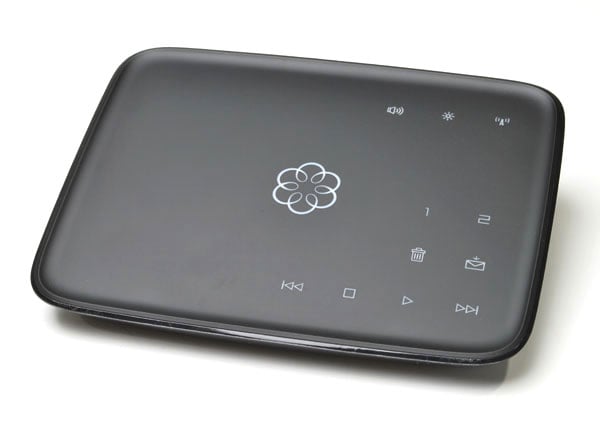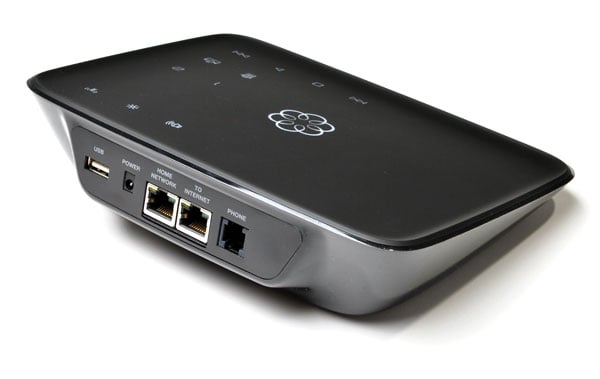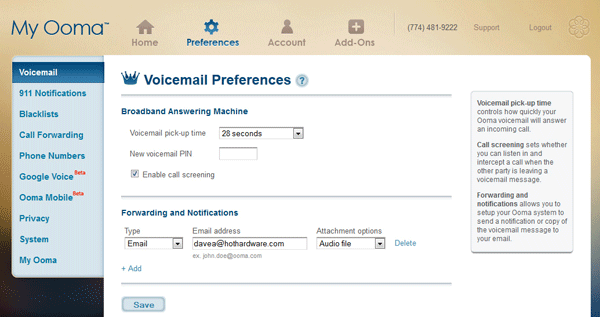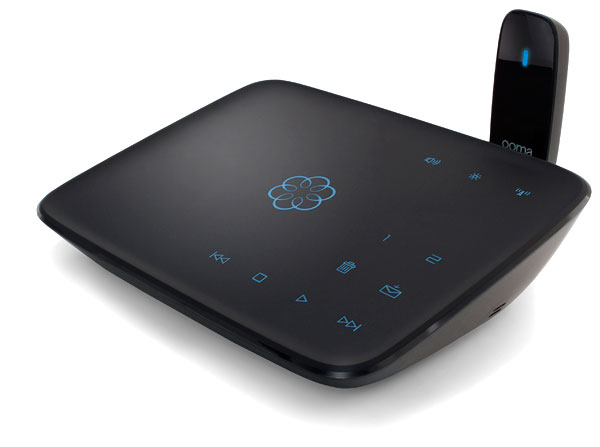Two Weeks with Ooma: Quasi-Free Phone Service Never Sounded So Good
 There's an old saying that goes something like "the best things in life are free." Then there's another, more cynical one that says, "there's no such thing as a free lunch." While I'm not here to choose sides or recite old proverbs, I'd offer that, in reality, both views are often very true and have merit.
There's an old saying that goes something like "the best things in life are free." Then there's another, more cynical one that says, "there's no such thing as a free lunch." While I'm not here to choose sides or recite old proverbs, I'd offer that, in reality, both views are often very true and have merit.
Which brings us to the notion of "free home phone service," that the folks at Ooma like to market their Telo Voice-Over-IP product with. Could it be that this product really offers free residential phone services? The answer of course isn't that simple, though the short answer technically is, "no."
Now before you scream cries of false advertising, I'll give you a bit more backdrop, in case you're not in the know. Ooma sells their Telo VOIP device for $199.99. At this price, you get just the Telo device itself, which is compatible with your existing landline phones. Just connect the Telo unit to a wired network connection (or wirelessly with an optional wireless USB adapter) and then plug in your existing phone (or pipe it into your residential phone wiring) and you're in business. The cost for the service? Zero... for the service. However, like virtually everything else in life, you have to pay taxes and in some areas there are regulatory fees too, all of which can add up to about $3.50 to $4 per month or so. From there you do get unlimited nation-wide calling in the US and per-minute pricing for international calls including Canada. So free isn't exactly free but pretty darn close.
That said, you do have a higher start-up cost with the Ooma Telo at $199 for the base system ($249 with handsets). However, if you're still paying in excess of $40 per month for a phone line or a similar service like Vonage, Oooma's low monthly cost could help you recoup that investment within six months or so.
Design, Aesthetics and Performance - Impressive:
The Telo device itself is quite nice, so you do get a bit of justification for the initial investment. The buttons on the face of the unit are all capacitive touch sensitive and allow you direct access to voicemail services and instant playback. It's actually a really nice feature, when you consider the need to call-in to voicemail services when you're at home or in the office. No need to go through the dance of voicemail menus getting your messages, just press the play button if you see the message indicator light blinking and your messages are played back to you like traditional answering machine. You can of course retrieve voicemail remotely as well.
The backside of the device has Ethernet in and out ports, as well as a standard phone jack, a USB port and power jack. Ooma suggests you hook the Telo unit up inline, right after your DSL, Cable or Fiber modem and before your network router, for optimal performance but you know as well as I do that most folks are just going to hang this thing off a spare router port. That's how I tested the system as well of course.
Performance-wise, call sound quality was excellent, though we did notice a small hiccup just once, where someone we were having a conversation with noted we dropped out for just a second. Overall though, we'd say that Ooma's service quality was excellent and actually surpassed our experience with Vonage, both in terms of call quality and robustness of connection, holding calls together. Heavy network congestion may cause a drop out here and there but for the average user, for small office or personal use, Ooma performs nicely.
You can check out the voicemail MP3 file that was emailed to me here, upon setup of the Ooma device (I configured Ooma's Premier service to send me voice notes via email). It will give you a rough idea of call sound quality - Ooma Configuration and Welcome Test Sample .
One of Ooma's online preference control panels, accessible from any web browser.
Within Ooma's basic service package, you get things like call waiting, caller ID, voicemail and E911 features. 411 info calls are .99 per call, though. You can however, upgrade to Oooma Premier for $10/month which opens up the product to a world of features like call forwarding. Some of the added features are standard, quite frankly, with competitive landline and VOIP services but not all. If you want things like voice-to-text, voicemail forwarding of MP3 audio files to your email, Google Voice support, three-way conferencing, call screening, unlimited calling to Canadian provinces, and other advanced services, then you're going to want to shell out the monthly ten-spot for Ooma Premier.
Personally, I really like the Multi-Ring feature of Ooma Premier, that gives you the ability to have calls simultaneously ring to your cell phone and as well as Ooma line, should you step away from your desk. It worked like a charm and is a great way to aggregate your calls if you're on the road and don't want to miss someone coming in on your business line, for example.
With the optional Ooma Wireless Adapter you can take the device anywhere there is a WiFi signal.
The final feature that got me a bit jazzed about the Ooma is its WiFi USB dongle. First you have to configure the stick for the WIFi network you're on, with an available PC. Then plug the little fella into the Telo's USB port and you'll have Ooma calling service no matter where you are, as long as you have a WiFi connnection. This could come in especially handy at a vacation rental location, for example, where cell service might not be so hot, or if you want to have access to your business or home phone line for checking messages or intercepting the more important calls, that you don't mind being disturbed on vacation for.
Summing up my short experience with Ooma's service and their Telo VOIP device, I'd have to say that the features aren't primarily what are most attractive though. Ooma Premier is a good value for $10/month but what's really interesting about the product is the low monthly cost in general, which is about as close to free as it gets right now, if you want a dedicated number. It's even cheaper than a Skype dedicated number on an annual basis, though again, the initial start-up cost is a bit steep. If you're stuck currently with a standard landline or more expensive VOIP service like Vonage, Ooma is almost a no-brainer because again, you'll quickly recoup the upfront costs over a few short months. The only minor risk involved is how long Ooma will be in business with their current model. The company was started in 2004 with service availability in 2007, so it's safe to say they're stable and not going anywhere any time soon. In short, risk is minimal and we've also read many end user reviews that praise the company's customer service and the service itself as well.
Perhaps Ooma isn't a completely novel offering in the VOIP arena, though their Telo device definitely is a cut above others on the market. They've also been out there for a while, so perhaps my personal experience report here is a little late to the party. But hey, I just tried the service and I'm pretty pleased with it, so I thought I'd share. That's how we roll around here. No wait, that's what we do. Enough cliche's...
Have any direct experience with Ooma? Drop your thoughts in the comments below as usual. I'd be happy to hear what you think too.
We've also heard Ooma is lining up to debut new "smartphone-like" services this year at CES 2012 in Las Vegas. I'll keep you posted if I see something new and innovative from the Ooma team. I've got my eye on them now and may very well move my phone services onto their network too.






